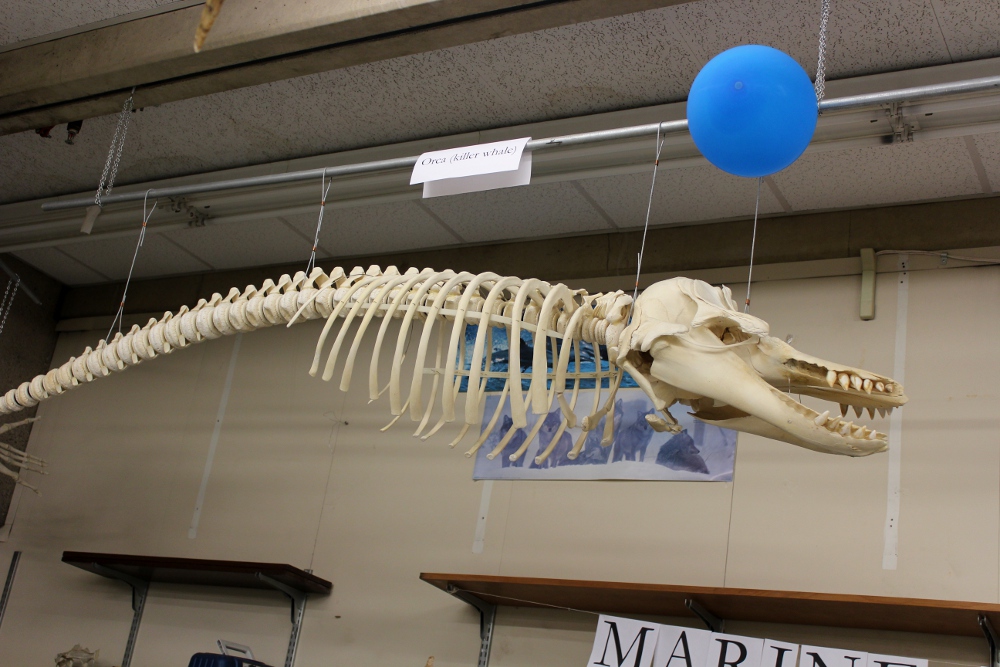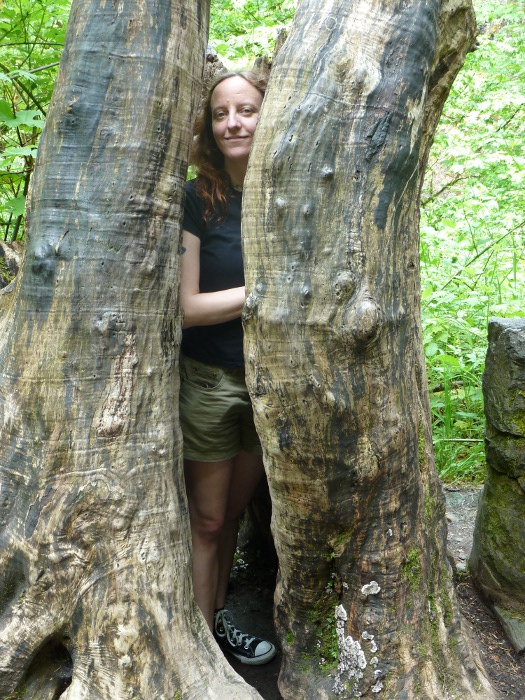Despite my busy studio and writing schedule, I do get out of the apartment sometimes! Honest! And recently I got to get my nature nerd on by going to a couple of really delightful local natural history events.
On Saturday, October 24, Portland State University’s Department of Biology held their first Museum of Natural History Open House. This consisted of the department throwing open the doors of classrooms (stuffed full of all sorts of gorgeous specimens) to the public, and students from the graduate program showing off presentations on their favorite topics, ranging from beetles to lichens to a diversity of pollinators. Since Portland currently lacks a decent natural history museum, this was something I wasn’t going to miss!
I took a LOT of photos, more than I can reasonably fit here, but I wanted to share a few of my favorites:

I love old bird study skins, and I also really think woodpeckers are awesome. So this little display of study skins from native woodpecker species was right up my alley. From left: downy woodpecker, hairy woodpecker, pileated woodpecker, northern flicker, and red-breasted sapsucker. Of these, the sapsucker’s the only one I’ve yet to spot in the wild–but it’s on the list to look for! Also, notice the red stripe on the cheek of the flicker? That’s how you know it’s a male (the “moustache” stripe can also be black in some populations).

There were, of course, a LOT of skulls and articulated skeletons. I was really excited to see adult and baby hippo skulls in person for the first time. Look at the gnarly tusks on the adult–those are several very good reasons the hippo kills more people every year than crocodiles! Don’t let their lazy appearance fool you, either; a hippo can easily outrun a person any day of the week.

Molly Radany, who tipped me off about the event in the first place (thank you!) put together this awesome harvest-themed info display about Pacific Northwest pollinators. Lest you think it’s only the honey bees we need to be saving, her work shows that there are literally dozens of insects responsible for making sure native plants and crops get pollinated and come to fruition.

The same lab that housed Molly’s pollinator display also had shelves full of jars upon jars of wet preserved specimens, of which these are just a tiny portion. They’re not everyone’s cup o’ formaldehyde, but they’re incredibly valuable for helping students study the anatomy of different species without having to go through the time-consuming process of taxidermy. And for a lot of these smaller amphibian, reptile and fish specimens, wet preservation is a much better option than dry taxidermy anyway.

This orca skeleton seems absolutely delighted with the balloon it was given for the festivities. The entire room was full of marine mammal skeletons and skulls and was one of my favorite spots in the entire event. I wish I’d had more time there; we got to that room just as the event was wrapping up.

Not every critter in the place was deceased. Several displays included live animals, including one dedicated to the study of the hibernation of Canadian garter snakes. The researching professor brings back a few every year for study, and returns them in fall in time for hibernation. This little noodle was poking its head out of the substrate at just the right moment.

Yes, I was inspired to run with the caribou. Seriously, though, I really enjoyed the Museum of Natural History event, and I truly hope it ends up being repeated.

Then this past Sunday (my birthday!) we ended up at the Oregon Mycological Society’s Fall Mushroom Show at the Forestry Center. This photo doesn’t really show the scale of the event or just how many people were there. It was pretty darn busy, and it was tough to get in at any of the info tables–which is good, because it shows a lot of interest! I made it to part of the myco-remediation talk (there were several talks I would have liked to attend). Since the lights were out I didn’t feel right taking pictures; needless to say, the talks definitely added to the event.

Here’s a different angle, showing one of the many beautiful fungus displays OMS put together for the event. Seriously, there were hundreds of species represented, all put together in these amazing life arrangements.

Unsurprisingly, the identification table was one of the most popular, always packed every time I went by. Here you can see just a few of the field guides an ambitious mycologist might have in their arsenal, and in the background one of the microscopes showing spores under high magnification. I wish I’d had more time at this particular table–maybe if I show up earlier next year.

This table of Amanita and Agaricus specimens was especially pretty.

And of course my favorite table of all–the books!!! My sweetie got me a copy of Mushrooms of the Pacific Northwest as a birthday gift. I feel a bit overwhelmed by all the many sorts of fungi we have here, particularly since so many of them look really similar and can only be told apart by tiny details like spore prints and microscopes. Still, it’s a good basic guide to have with me out in the field.
All these events have helped me to be more motivated to get my own natural history-inspired event, Curious Gallery, ready for its third year. It’ll be held January 9-10, 2016 at the Crowne Plaza Hotel in Portland, OR. If you’d like to display your cabinet of curiosities-themed art in our fine art exhibition, or present a talk, workshop or performance on topics concerning nature, culture, and/or art, or simply join us for a weekend of curiosity, education and beauty, all of the relevant information may be found at the official Curious Gallery website.
Like this:
Like Loading...















